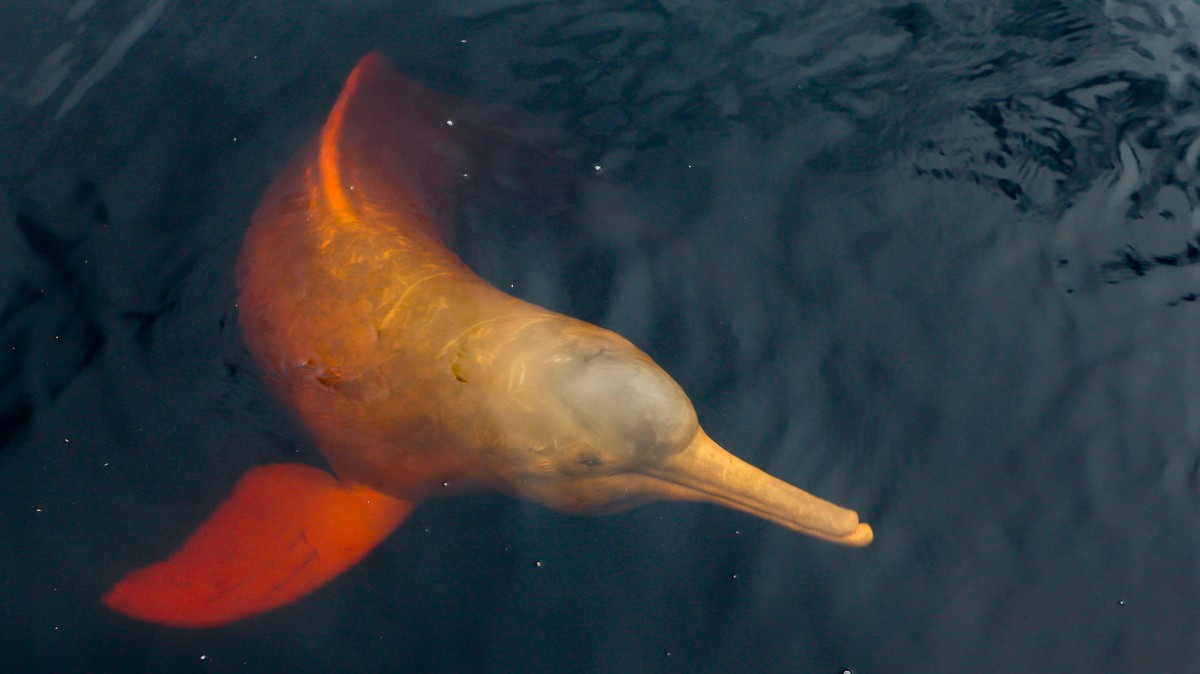More than 100 Amazon river dolphins have died in the sweltering waters of Brazil’s Lake Tefé, which recently hit 102 degrees.
Roughly 120 dolphins have perished in a tributary of the Amazon River over the past week, a mass death that experts think may be linked to an extreme drought and heat that is plaguing the region.
The mass death of these rare river dolphins has underscored concerns about the effects of human-driven climate change, which is exacerbating all types of extreme weather events across the world. Scientists at the Mamirauá Institute, a local research center supported by the Brazilian government, said that more research would be needed to isolate the exact culprits behind the dolphin deaths, especially because an emerging El Niño weather pattern could be a factor.
“It’s still early to determine the cause of this extreme event but according to our experts, it is certainly connected to the drought period and high temperatures in Lake Tefé, in which some points are exceeding 39 degrees Celsius (102 degrees Fahrenheit),” the institute said in a statement to CNN.
The dieoff of the river dolphins occurred in Lake Tefé, a part of the upper Brazilian Amazon that has experienced sweltering temperatures that are about 10° Fahrenheit hotter than average for this time of year. Locals and researchers in the area have also reported that thousands of fish have died during the drought due to a scarcity of oxygen in the freshwater system.
About 80 percent of the deceased dolphins are “boto,” a species of pink dolphins, while the remainder belong to a gray species called “tucuxi.” These animals have adapted to the freshwater ecosystems of the Amazon, which confines them to a relatively limited habitat that renders them particularly vulnerable to extreme heat. However, mass die-offs of whales and other wide-ranging oceanic species are also occurring in many other regions of the world; many of those events may be linked to climate change.
The Tefé region is suffering due to an anomalous lack of rainfall in recent weeks, which have lowered the depths of some rivers and lakes by an astonishing three meters, or nine feet, compared to average levels at this time of year.
“The past month in Tefé has seemed like a science-fiction climate-change scenario,” Daniel Tregidgo, a British researcher in the area, told The Guardian. “Regular sightings of pink river dolphins are one of the great privileges of living in the heart of the Amazon. Pretty much every time I go to the market to have breakfast I see them come to the surface and it reminds me why I live here.
“To know that one has died is sad, but to see piles of carcasses, knowing that this drought has killed over 100, is a tragedy,” he added.
link: https://www.vice.com/en/article/bvj5vv/the-amazon-is-getting-so-hot-that-dolphins-are-dying-en-masse



Both wrong. The year average of 1.5C was expected around 2030, but the immediate 3 month average already hit 1.5C.